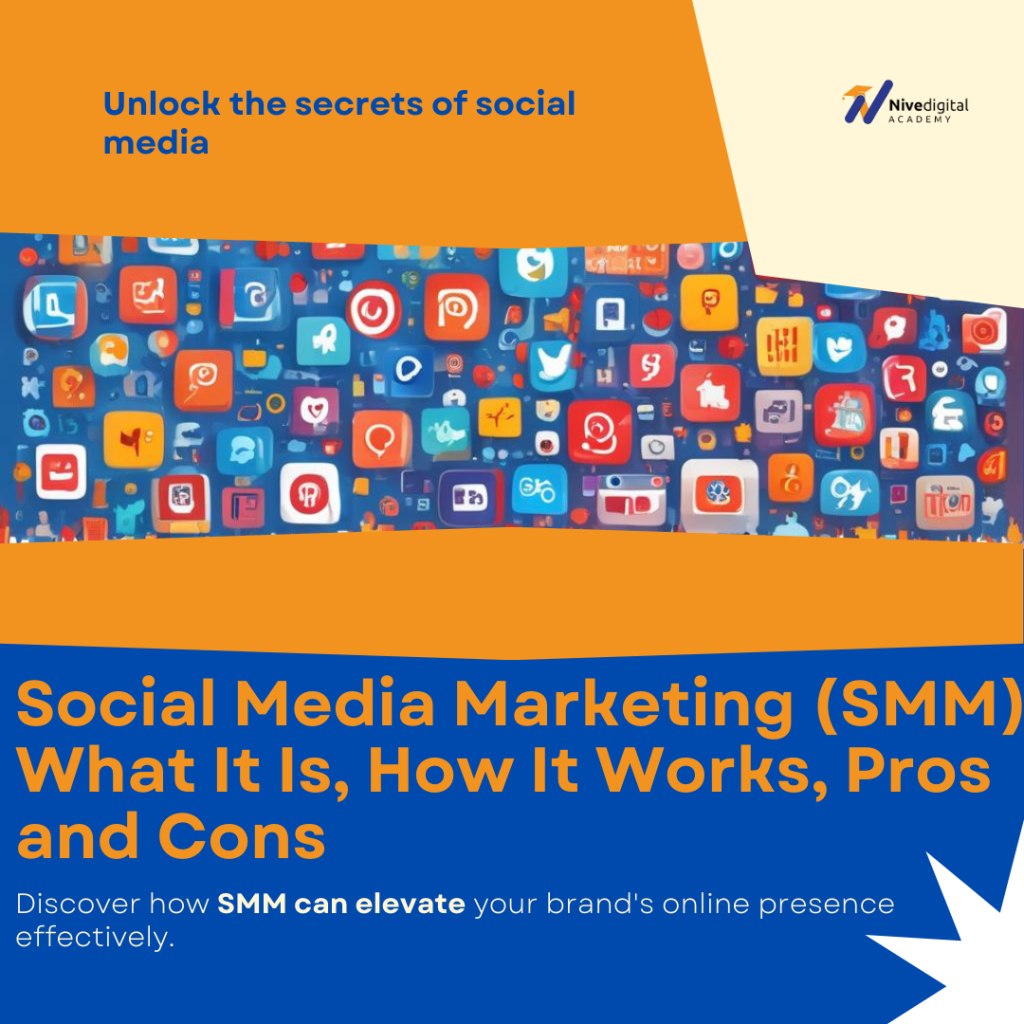
What Is Social Media Marketing (SMM)?
Social Media Marketing (SMM) is the process of promoting products, services, or brands on social media platforms. Businesses use social media to reach customers, increase sales, and build brand awareness. SMM involves creating content, running advertisements, and engaging with users on platforms like Facebook, Instagram, Twitter, LinkedIn, TikTok, and YouTube.
How Social Media Marketing Works
Social Media Marketing uses digital platforms to connect with target audiences. Businesses create and share content, interact with followers, and run ads to achieve marketing goals. The key elements of SMM include:
1. Creating a Social Media Strategy
A successful SMM campaign starts with a clear strategy. Businesses should define:
- Goals: Increase sales, generate leads, or boost engagement.
- Target Audience: Identify the ideal customers.
- Platforms: Choose the most suitable social networks.
- Content Plan: Decide on post types (videos, images, text, etc.).
2. Content Creation and Posting
Businesses create content that attracts and engages users. Common types of content include:
- Images and Videos: High-quality visuals perform well on social media.
- Infographics: Useful for presenting data and insights.
- Stories and Reels: Short video clips that engage users quickly.
- Live Streaming: Real-time interaction with audiences.
3. Engagement and Community Management
Businesses must interact with followers by:
- Responding to comments and messages.
- Hosting Q&A sessions and polls.
- Encouraging user-generated content.
- Building relationships with influencers and brand advocates.
4. Social Media Advertising
Paid ads help businesses reach a larger audience. Common ad types include:
- Sponsored Posts: Paid content shown to a targeted audience.
- Display Ads: Banner ads on social media feeds.
- Video Ads: Short promotional videos.
- Carousel Ads: Multiple images in one ad.
5. Analytics and Performance Tracking
Businesses use analytics tools to measure campaign success. Important metrics include:
- Engagement Rate: Likes, shares, comments, and clicks.
- Reach and Impressions: Number of users who see the content.
- Conversion Rate: Percentage of users who take action.
- Return on Investment (ROI): Revenue generated compared to spending.
Pros of Social Media Marketing
1. Increased Brand Awareness
SMM helps businesses reach a wide audience. Regular posting and engagement improve brand recognition.
2. Cost-Effective Marketing
Social media platforms offer free tools for marketing. Paid ads are cheaper compared to traditional advertising.
3. Better Customer Engagement
Businesses interact with customers directly through comments, messages, and live chats.
4. Targeted Advertising
Social media platforms allow businesses to reach specific demographics based on age, location, and interests.
5. Increased Website Traffic
Sharing links to a website on social media drives traffic and potential sales.
6. Competitive Advantage
A strong social media presence helps businesses stand out from competitors.
7. Improved Search Engine Rankings
Consistent engagement and shared content can boost SEO rankings, leading to more website visitors.
Cons of Social Media Marketing
1. Time-Consuming
Creating content, posting, and engaging with users require consistent effort.
2. Negative Feedback and Public Complaints
Customers can leave bad reviews or complaints, which can harm a brand’s reputation.
3. Algorithm Changes
Social media platforms update their algorithms regularly, affecting content visibility.
4. High Competition
Many businesses use social media, making it hard to stand out.
5. Paid Ads Can Be Expensive
Running ads requires budgeting and constant optimization to get results.
6. Privacy and Security Risks
Data breaches and hacking can expose sensitive business and customer information.
Best Practices for Successful Social Media Marketing
1. Choose the Right Platforms
Each social media platform serves different audiences. Businesses should select platforms based on their target market.
- Facebook: Best for community engagement and ads.
- Instagram: Great for visual content and younger audiences.
- LinkedIn: Ideal for professional networking and B2B marketing.
- Twitter: Best for real-time updates and news.
- TikTok: Popular for short videos and younger users.
- YouTube: Useful for long-form video content.
2. Post Consistently
Regular posting keeps audiences engaged. A content calendar helps maintain consistency.
3. Use High-Quality Visuals
Attractive images and videos increase engagement and shares.
4. Engage With Followers
Businesses should respond to comments, ask questions, and interact with users to build relationships.
5. Leverage Influencer Marketing
Collaborating with influencers helps businesses reach a larger audience and gain credibility.
6. Track Performance and Adjust Strategies
Using analytics tools helps businesses understand what works and improve their strategy.
7. Optimize Content for Each Platform
Content should match the style and audience of each platform. For example:
- Short videos perform well on TikTok and Instagram.
- Text-based posts work on LinkedIn and Twitter.
- Long videos gain traction on YouTube.
Conclusion
Social Media Marketing (SMM) helps businesses connect with customers, promote products, and grow their brands. It includes content creation, advertising, engagement, and analytics. While SMM offers benefits like cost-effectiveness and audience reach, it also comes with challenges like competition and algorithm changes.
A strong strategy, quality content, and regular engagement improve success in social media marketing. Businesses that use social media effectively can increase brand awareness, attract customers, and drive sales.
Frequently Asked Questions (FAQs)
1. Is Social Media Marketing Free?
Basic SMM is free, but businesses often invest in paid ads and tools for better results.
2. How Long Does It Take to See Results from SMM?
Results vary based on strategy, audience, and competition. Organic growth may take months, while paid ads yield faster results.
3. Which Social Media Platform Is Best for Marketing?
The best platform depends on the business and target audience. Facebook and Instagram work well for most industries, while LinkedIn is best for B2B marketing.
4. Can Small Businesses Benefit from Social Media Marketing?
Yes. SMM helps small businesses reach new customers, build trust, and increase sales without large advertising costs.

Article by:
Oyejobi Adeola, founder of NiveDigital & NiveDigital Academy, is a top expert in SEO and digital marketing.
With over a decade of experience, he has helped businesses grow through advanced SEO strategies and trained hundreds of students to succeed online.
His insights have been featured in top industry publications.

